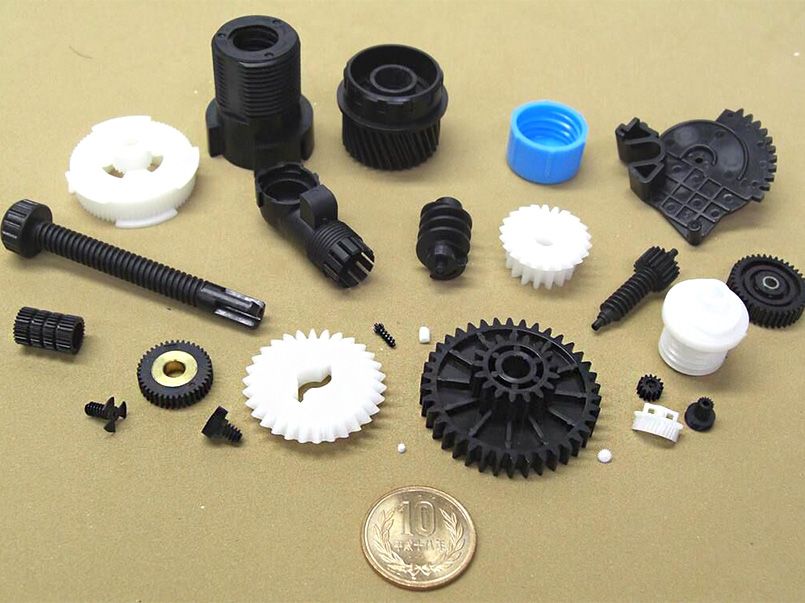2020/03/10
If you’re new to the process of injection molding, there will be a few words and terms you come across that you’re not familiar with.
Whether your plastic parts are being manufactured by a third party or you’re simply new to the process, getting to grips with the jargon of injection molding can be tricky.
This series of questions will help to demystify some of the most commonly used terms in the plastic injection molding process.
What is a molding cavity?
In each individual part mold or press there are two parts: the A-side and the B-side. To create a plastic part, hot plastic is poured into the cavity of the press (the A-side), which the clamp (the B-side) is then pushed into in order to mold the plastic into the specific shape that the clamp and cavity has been designed to create.
Once the plastic has cooled and the mold shape created, the clamp is pulled out of the cavity and the piece is ejected from the press.
What does the term flash mean?
Flash is the term for any excess material that is left after a piece has been molded. This is often left on the edge of a part. After most parts have been made, the flash has to be removed (deflashed) through cutting, breaking or grinding
because it is considered a fault in the part and is caused by an error of the injection-molding process.
Process errors that can cause flash excess include overmolding, leakage of material from the mold or a material injection rate that is too high.
Where is the gate in an injection-molding machine?
The gate is the point at which the hot plastic resin enters the mold press. The location and type of gate that is chosen for a mold can have a huge impact on the shape and the quality of the part. This is because it is the place where the molded part is separated from any scrap plastic.
Dependent on the design of the part, a gate or a combination of gates can be used to adjust its shape or to minimize the amount of waste that is created from the molding of the part.
What is the line of draw?
Also known as the parting line, the line of draw is a key aspect of the injection-molding process as it is the place where the cavity (A-side) and clamp (B-side) meet.
The direction of the line of draw is important because it determines where the mold splits and must be located correctly to avoid damage to the part from any metal obstructions in the machine. It’s also important when considering the aesthetic quality of the part as the parting line may also be visible on the part.
Where is the sprue in an injection molding machine?
The sprue is the passage through which the molten plastic resin is delivered to the mold. Often it has a role in controlling the amount of plastic resin that is inserted into the mold.
‘Sprue’ is also an alternative word to flash that can refer to the excess plastic that is left on a part after the injection-molding process is completed.
Where is the runner in an injection molding machine?
The runner connects the sprue and the gate in an injection molding machine so any molten plastic resin can run down to the mold press. Ensuring that the runner has the right diameter and length for the part that is being created is essential, as this will change dependent on the volume of the part, the size of the gate and the capacity of the machine.
Runners can also be part of hot and cold systems. For more complex parts, hot systems keep the plastic molten and enable it to be delivered to different parts of the mold. Cold systems on the other hand allow for a greater range of polymers to be used in the machine.
What happens during a shear?
As molten plastic resin is delivered into a mold, the way it flows is affected by the shape of the mold, the speed at which the resin is injected and its rate of cooling. This means that adjacent layers flow at different rates, rubbing together and causing friction. This is the process of shearing.
Knowing the shearing rate is important for manufacturers as it will help to determine the properties of the product. For example, if the shear rate is high, the plastic will be more fragile and stressed.
What is the shrink rate?
When plastic parts cool and harden they shrink in size. Considering the shrink rate of a part is important when designing the mold and the injection-molding process as it will affect the quality of the final part.
Choosing a polymer with the right shrinkage rate and controlling the temperature and moisture exposure in the process will reduce the chance of warpage in the part and reduce the change of deformities or changes in shape.
What is the vestige?
After a part is molded, the excess material that protrudes from the gate and runner is called a vestige and is often removed by hand or machine to finish the final part. Trying to reduce the amount of vestige that is created and finding an appropriate method to remove it is important to reduce the aesthetic impact on the final part.
What does warp mean?
Warpage means there is excessive distortion in the final plastic molded part. This can be caused by a range of problems with the injection-molding process. Often, these deformities in the final part are caused by uneven cooling and uneven shrinkage rates in different parts of the part. Ejecting the part from the machine at the end of the process can also cause deformities. By reducing the amount of warpage in final parts, companies can also reduce their costs and wastage.
